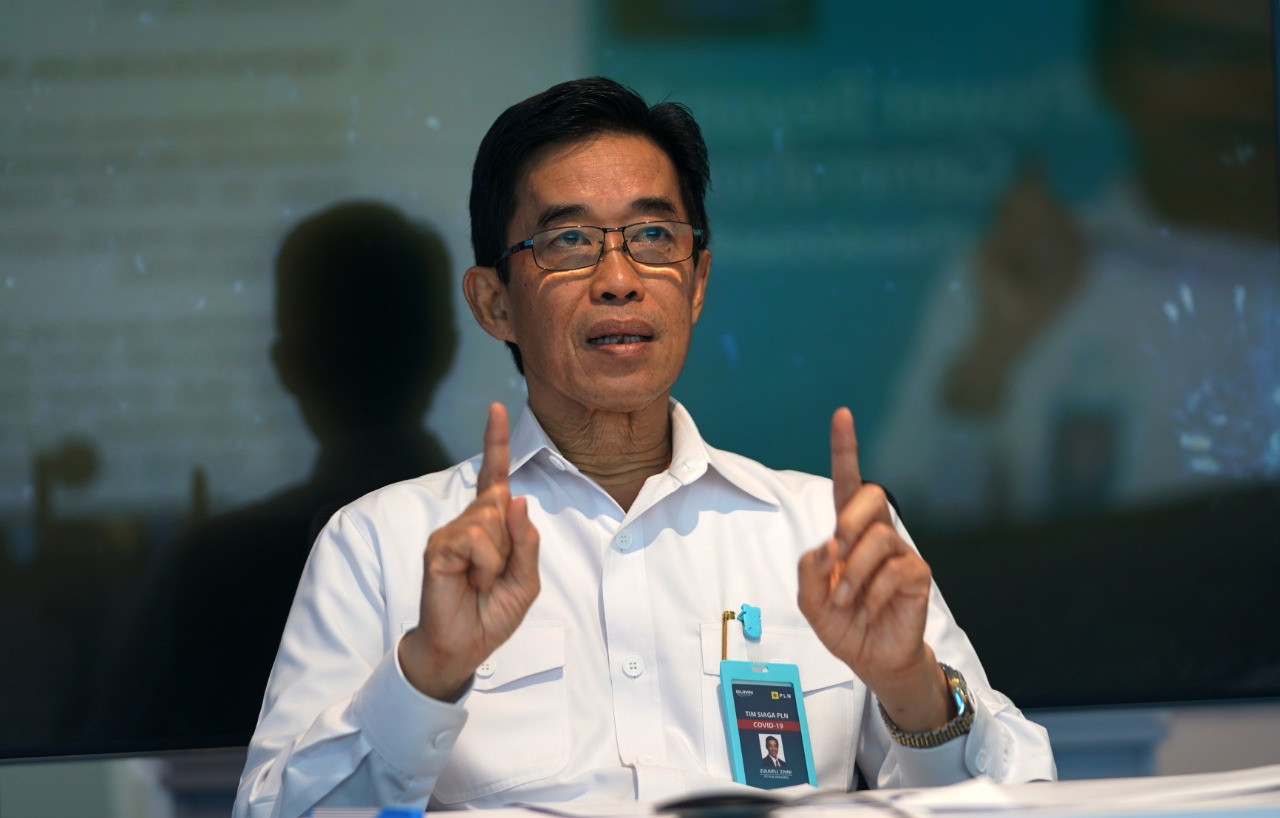Popular Reads
Top Results
Can't find what you're looking for?
View all search resultsPopular Reads
Top Results
Can't find what you're looking for?
View all search resultsPLN pledges carbon neutrality by 2050
Change text size
Gift Premium Articles
to Anyone
S
tate-owned electricity monopolist PLN has pledged to become carbon neutral by 2050 with a plan to phase out fossil fuel-fired power plants and use more renewable energy in its networks.
PLN president director Zulkifli Zaini said the company was planning to develop new solar and wind power plants, mix biomass with coal – so-called co-firing – in existing coal plants and convert diesel-fired power plants to renewable energy-based power plants.
“After we finish developing the 35,000 megawatts [of additional power generating capacity], we will fulfil Indonesia’s electricity needs using only renewable energy,” Zulkifli said in an online briefing on Friday.
Since 2015, PLN has been building new power plants to produce a combined 35,000 MW, 60 percent of which are coal-fired. The government-mandated project has strained the company’s finances and compounded its environmental problems.
Read also: Cash-strapped PLN steers away from green energy
Zulkifli added that PLN’s electricity production capacity was expected to reach 1,100 terawatt-hours in 2050, assuming a 4.7 percent annual growth from the current supply of between 250 TWh and 300 TWh. The company seeks to use renewables to raise the output.
However, he did not mention the company’s carbon dioxide emission volume that would be the benchmark to measure carbon neutrality.
PLN joins dozens of other utilities globally, such as the United Kingdom’s National Grid, the United States’ Xcel Energy and Malaysia’s Sarawak Energy, to commit to achieving net zero by 2050 amid growing global pressure to comply with the landmark Paris Agreement aimed at slowing climate change.
Indonesia, the world’s fourth-largest greenhouse gas (GHG) emitter in 2015, has committed to a nationally determined contribution (NDC) of reducing GHG emissions by at least 29 percent under a business-as-usual (BAU) scenario by 2030.
Fabby Tumiwa, the executive director of the Institute for Essential Services Reform (IESR), said PLN needed to stop developing or signing new contracts for coal plants starting 2025 to achieve the decarbonization plan.
He also said that PLN needed to develop 10 GW of renewable power plants, while the private sector, including households, would need to contribute between 3 GW and 4 GW to meet renewable energy mix targets.
The government’s target is to have renewables account for 23 percent of the primary energy mix in 2025. Last year, the share of renewables was only 13.4 percent.
“I think it is possible for PLN to decarbonize in 2050, economically and technically speaking,” Fabby told The Jakarta Post in a phone interview on Friday.
PLN plans to convert diesel-fired power plants with an installed capacity of 2 GW across 2,130 locations into renewable energy power plants. In a first phase beginning this year, the company will convert 200 power plants with a total capacity of 225 MW, which are expected to start operating by 2024, while the remainder are to launch by 2026.
Energy and Mineral Resources Minister Arifin Tasrif previously said there were additional plans to phase out 23 aging coal plants with a combined 5,655 MW of installed capacity.
Read also: Government studies plant to convert old power plants into renewables
PLN also plans to implement co-firing at 52 coal plants across the country by 2025 to reduce emissions. The plan is estimated to require 9 million tons of biomass and generate 10.6 gigawatt-hours. The company has so far begun co-firing at 11 coal power plants.
To secure the biomass supply, PLN is partnering with state-owned plantation company PT Perkebunan Nusantara III (PTPN), state-owned forestry company PT Perhutani and state-owned agriculture company PT Sang Hyang Seri.
Energy analyst Putra Adhiguna of the Institute for Energy Economics and Financial Analysis (IEEFA) previously wrote that Indonesia’s co-firing plan, judging from the experience with such technology in the United States and China, would likely face challenges related to high biomass prices and feedstock stability.
“The biomass co-firing plan will require nothing less than the creation of a large-scale biomass industry to provide stable co-firing fuel supplies anywhere between 4 to 9 million tons annually,” he wrote in a February study.










